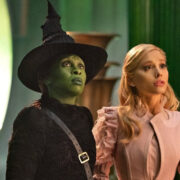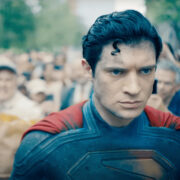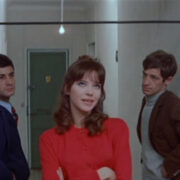THE LAST RACE: A Straight Winner
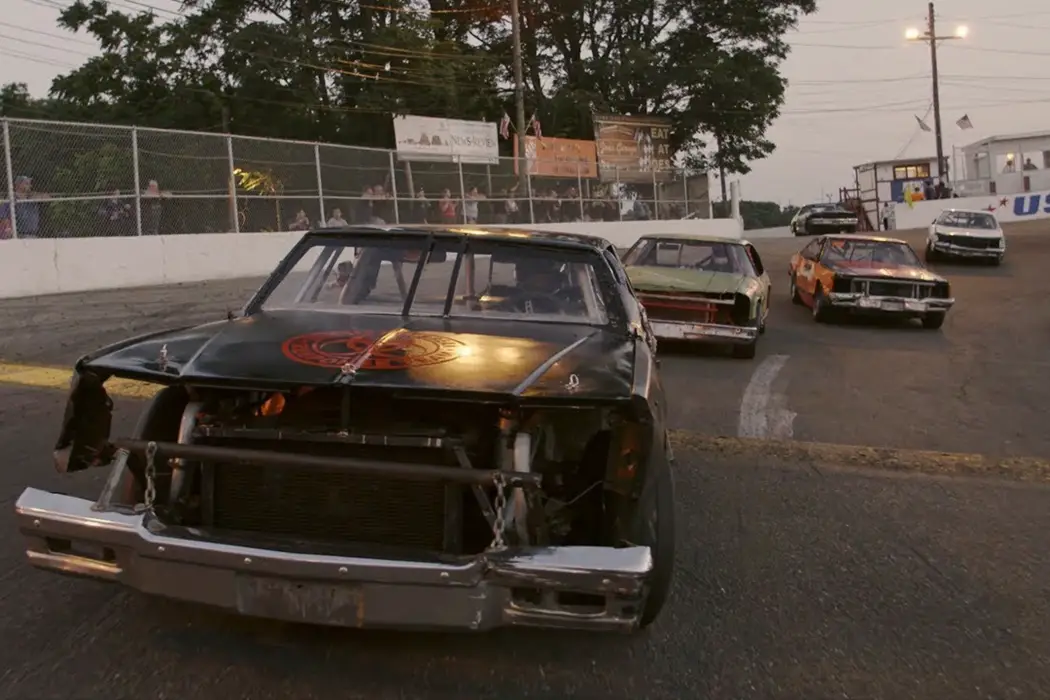
Nathan is a 22 year old writer and film lover…
The Last Race is a tremendous film that follows the last stock-car racetrack in Long Island. In the hands of a less talented team of filmmakers, this could become a naive, nostalgic, or condescending look at racing or the community that surrounds it. The makers of The Last Race, however, turn in a thoughtful and stylish film that avoids those pitfalls and instead achieves something truly beautiful.
A Race Track and A Twist
As if the filmmakers knew that many people who seek out independent documentaries would be judgmental about stock-car racing, the first thing The Last Race does is make those races beautiful. As someone who does not watch much car-based racing, I was taken aback by how well I understood the heroic iconography onto which the beginning of the film grafts itself. The races are dynamic and engaging and by using long shots taken from inside the cars, you are immersed. There is a shot from a camera on the front of a car that, after a considerable length of racing, crashes into another car and then continues driving, only now with the camera showing the blue sky that is stunningly beautiful.
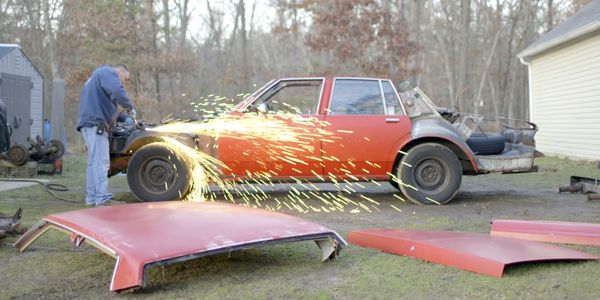
But then the film changes after the introduction of real estate. Breaking from the films largely ethnographic feel, a realtor speaks directly into camera talking about how the area around the track is developing (by which she means that there are more and more shopping centers with major box store chains in the area) and the land for the track is now worth a great deal. After this, we meet the owners of the store who admit they’d hate to see the track torn down for a shopping center but are getting close to retirement age and are getting tired.
These two scenes mark a shift in the film from romantic elegy to level-headed examination. After the shift, we see fights between the racers, major injuries from crashes, and the daily stresses of running a business. This is balanced out by seeing just how important this track and these races are to the drivers, fans, and even the tired owners. It is also incredibly important to note that most of the romantic shots were of cars, but once the film transitions out of this romanticism, it is dealing with people.
The Last Race shows a love for this track, but not a naive love. The filmmakers are not looking at this track through rose colored glasses and are not seeing these people as heroes, but still obviously care about this track and the community around it.
Avoiding Nostalgia, and Thank Goodness
Given that stock-car racing was once a much bigger part of life on Long Island and now this track is the only place left to see these races, The Last Race is nestled at a point pretty near nostalgia. The film avoids that land mine by focusing on the present and the effect of the past rather than the past itself.
Almost the entire film is focused on what this track is offering to people in the present. We see how repairing cars, videotaping races, or fighting drivers affects those people at that very moment. The few times the film shows someone discussing their history with the track, the history takes a backseat to the joy and pride this person has in the act of reminiscing. While certain people in the film might have a toxic nostalgia for a time when there was more stock-car racing, the film avoids it by being unceasingly present.
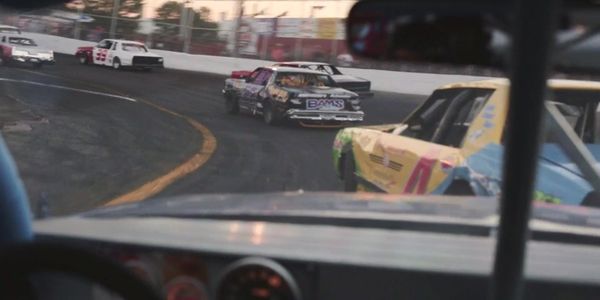
Additionally, we are spared any heavy-handed monologue about how the world is waning. No one talks about the track as if it is a relic or a vanguard. We know what it means for this track to be replaced with a Target and we know the historic factors involved in closing small businesses and we know that there is a fair chance this track is going to end up being a Target no matter what the current owners do. The film knows that we do not need to be told this and treats us like the educated adults we are.
Community Over Cars
At a certain point after the film has stopped trying to sell its audience on stock-car racing and has instead starting trying to complicate this entire endeavor, it becomes clear that stock-car racing is not important to the film. This is not a film about how mad epic stock-car racing can be, it is about the community that surrounds local activities. To this point, the film does a tremendous job of highlighting the community without making heroes.
It is a common occurrence for documentaries about a community to pick a handful of people and follow them intently. This is not the path taken by The Last Race. Instead, the film really tries to move around in the community, constantly showing different people but always narrowing in and treating them very humanely. It is common to spend a stretch with a person and, after starting to care about them, never see them again.
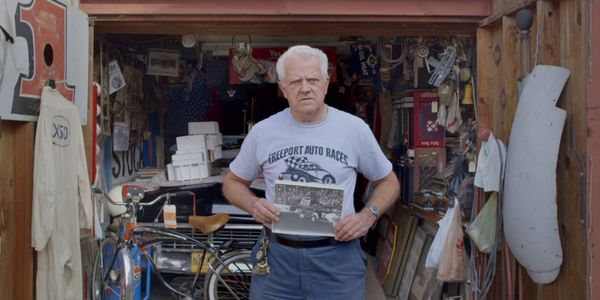
By moving around and avoiding treating the humans romantically, the only real protagonist in the film is the community faced with extinction due to the encroachment of box stores. While it is a stretch to try and compare this to old Eisenstein films, one certainly gets the feeling that someone in this production has been reading their Walter Benjamin. If nothing else, it leans in to the ability of documentaries (and especially ethnographic documentaries which is a genre with which this film flirts but never fully engages) to move outside of traditional narrative structures.
A Balance of Style and Ethnography
The Last Race is an aesthetic marvel in that it is able to move between overtly stylized and ethnographic documentary motifs while still remaining a unified piece. The film is able to flit between watching a father and son repair a car, a well staged interview with a man playing golf, and cameras running to catch a fight in the parking lot without missing a beat. Even many of the unobtrusive, long shots have a geometric composition and pacing that would make them well at home in many contemporary European art-house films. The ability to meld these two styles allows The Last Race to take the best of both which makes for a truly beautiful film.
I will add that this film is a tight 75-minutes. While the pacing of the film is relaxed and meandering, it is still able to remain concise and selective.
A Screed Against Homogeneity
Given that stock-car racing was born on Long Island and was once a much larger institution there, it would be fair to say that it qualifies as one of the regional characteristics of Long Island that makes it unique. Were this track to go under, it would be replaced by chains stores that base their business around the idea that you will get the same thing on Long Island that you will in Colorado. More than stock-car racing, this film is a lamentation about homogeneity.
There is a moment when the owner of the track says that people driving these cars are plumbers and shoe salesmen, they are able to come to the track and have kids look up to them and compete and feel like winners. She begins to fight back tears as she laments that she doesn’t know where else people can get that anymore. In an incredibly homogenized world where it is far less likely that that a shoe salesman owns his store than it would have been forty years ago, this feels incredibly salient.
As developed nations move more and more into consumption based cultures, there is a vital role that hobbies and non-professional activities could play, but that becomes impossible when places like this racetrack goes away. Watching this film, I kept thinking of all the people I know who responded to the depression of graduating college by investing in watching a lot of movies and tv shows and how much they could have benefitted from something like these races. Conversely, I also kept remembering the judgement with which I had looked at people for whom county fairs or community theatre were of great import and felt terrible.
I imagine there is a certain brand of cynic who might watch this movie and still think to themselves that it is pretty sad that these guys spend all this time trying to be the best in their county at driving in circles. That said, it certainly doesn’t seem as sad as someone who may have seen every episode of The Office but the closest thing they have to a hobby or anything to fill up their free time is taking on the laughable position of “pop culture junky.” Making matters worse, the fellow driving in circles at least has some connection to the people around him as opposed to the pop culture junky who is only connected to the products of international corporations.
The Last Race: Conclusion
The Last Race is a beautiful film that is impressive in what it is able to do aesthetically and rhetorically. It is able to find beauty in this Long Island community while still remaining clear-eyed and thoughtful. What’s more, it is a movie that respects their viewers enough to know that they can put these points together and do not need to be talked at. This is a movie worth hunting down and giving your full attention.
Do you have any hobbies that are specific to the area around you? Let us know in the comments below!
The Last Race was released in theaters in the USA and on VOD on November 16, 2018.
https://www.dailymotion.com/video/x57xapr
Does content like this matter to you?
Become a Member and support film journalism. Unlock access to all of Film Inquiry`s great articles. Join a community of like-minded readers who are passionate about cinema - get access to our private members Network, give back to independent filmmakers, and more.
Nathan is a 22 year old writer and film lover in Philadelphia, PA.


